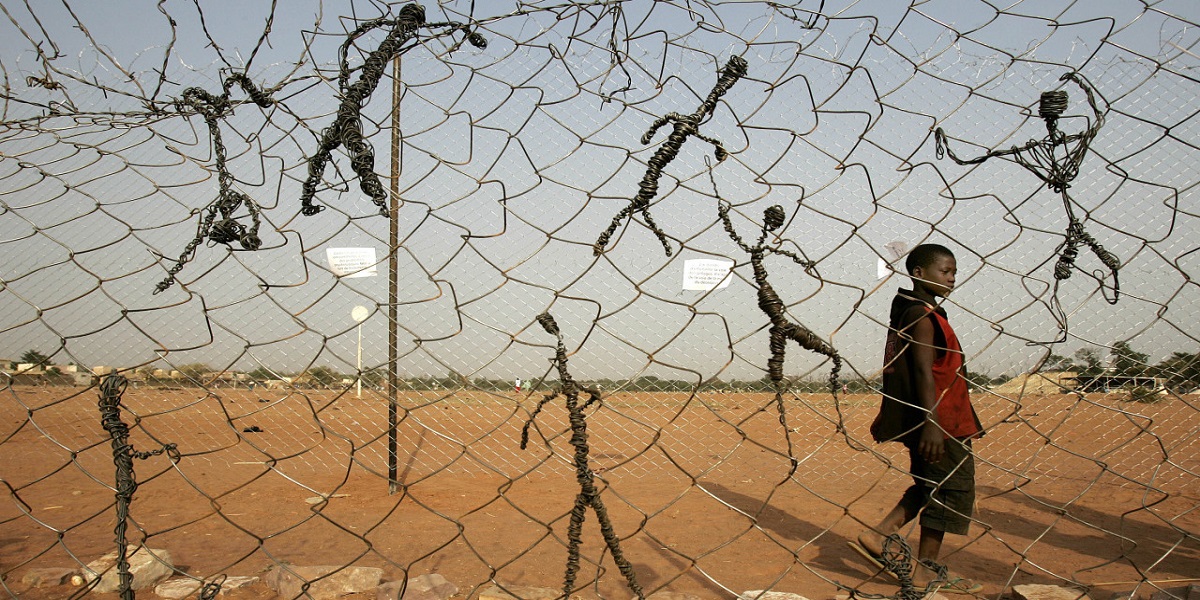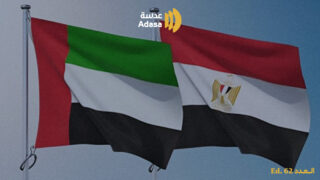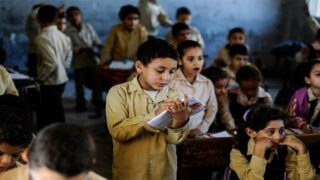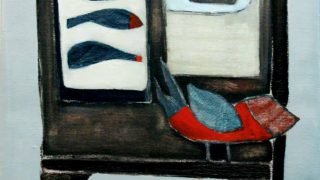
This publication has benefited from the support of the Rosa Luxemburg Foundation. This text may be reproduced in part or in full, provided the source is acknowledged.
“Immigrants coming from countries that have been destroyed by wars, famine and natural disasters make deals with smugglers, only to end up drowned in the sea or slaves to human traffickers”.
This is the exclusive story conveyed by the Western media. It is a good story; it covers, in its linear simplicity, the ready views on “irregular migration” from the standpoint of the other side of the Mediterranean Sea. It also satisfies the European imagination in its portrayal of the smugglers as shadowy hard-to-apprehend accomplices to crime and of the African migrants as simple-minded adventurous people who lead themselves to tragic fates.
According to statistics issued in 2018 by the International Organization for Migration - an agency of the United Nations-, between the years 2010 and 2015, the number of immigrants arriving to Egypt has increased from 295 thousand to 491 thousand. They are coming from South Sudan, Eritrea, Ethiopia, Chad, Somalia and Sudan, but also from Palestine and Syria, making Egypt one of the main transit stations for immigrants wanting to cross into Europe.
In 2018, the Africans registered as refugees or asylum-seekers with the Office of the United Nations reached the following numbers: 14.564 Ethiopians, 12.995 Eritreans, 10.518 South Sudanese, 6.714 Somalians, while the other nationalities accounted for 6.579. The registrations of 3.118 refugees were officially accepted in Egypt according to the Office of the United Nations High Commissioner for Refugees (UNHCR).
The closure of the Balkan route and the reinforcement of the control procedures over the Aegean Sea between Greece and Turkey led to an increase in the influx towards Egypt and Libya, especially after Turkey had signed an agreement with Europe in April 2015 to take back any refugees who departed from its land.
According to the UNHCR, the number of immigrants arriving or passing through Egypt from East Africa (South Sudan, Eritrea, Ethiopia and Somalia) didn’t exceed 57 thousand in 2013.
Faces
• Ali Mouki (23 years old) flew by plane from the Congo to Egypt to “study Business at the University of Cairo”. He lived in Egypt for 3 years. His family members managed to immigrate to Europe (he doesn’t say how) and he decided to complete his education in Cairo before joining them. He says that life in the Congo is extremely difficult and that everybody thinks of immigrating all the time as “the schools are bad, the economy is falling apart, most of the streets are unlit, employment opportunities are nonexistent, and young people kill time by playing soccer.” He adds that everybody wants to leave: the well-to-do families think about regular immigration while the majority considers leaving the country in an irregular manner.
• Takla (27 years old) is a Christian Eritrean from the Pentecostal Church (it is the newest Christian movement and the fastest growing nowadays) who comes from Asmara, the capital city of Eritrea. He fled his country because of religious persecution and explains that he used to pray in secret in fear of imprisonment, as hundreds of followers of the Pentecostal Church are in jails because of their religious beliefs. Takla arrived to Egypt, crossing the Eritrean border into East Sudan under the guidance of smugglers. He then took a Jeep car to Khartoum, crossing the desert to Aswan and finally boarding a train to Cairo. He is now waiting for his final departure after he paid 2000 dollars to brokers in exchange of the expected journey. The emergence of ISIL and the disintegration of the state in Libya have put the African Christian refugees under greater dangers which prompted many of them to consider traveling through the Egyptian territories which are bordered by the Mediterranean Sea, even through embarking from the Libyan coast would have been easier.
• Rahwa is a slender young woman of 16 years old who fled a small village in the highlands of Eritrea by herself. She is suffering from a parasitic infection after drinking some dirty water that the smugglers provided her and she had also been sexually assaulted by smugglers.
There are the Ethiopian refugees in Egypt too, and those are members of the Oromo tribes which constitute a majority in Ethiopia, compared to the other configurations of the country. Nevertheless, they had always been subjected to ruthless persecution (and even formed the “Oromo Liberation Font”) until a new president who is a member of this ethnic group was elected in March 2018.
The lifeblood between Egypt and Sudan
The Sudanese authorities maintain strict policies regarding refugees’ camps and restrict their freedom of movement. The UNHCR has condemned the deportation and repatriation of refugees, especially the Eritreans ones. Khartoum follows its own asylum legislation, derived from the Organization of African Unity Convention of 1969, that dictates the status determination procedures for “the refugee”.
According to the UN report of 2017, Sudan hosts more than 793.700 asylum seekers. There is a great number of refugee camps in Sudan, such as “Khor Al Waral” where most South Sudanese refugees are concentrated. The worst refugee camp, “Shajrab”, is well-known for the activity of human traffickers and kidnappers within it.
• Abdallah (23 years old) was born in the “Shajrab” refugee camp. He describes it as a prison where his movement was restricted to his trips to and from school (1). Abdallah came back to Sudan after travelling to Cairo and has been working since then with the Sudanese Red Cross. He says that the Sudanese security officers allow the kidnappers from the Rashaida tribe (which originates back to the Arabian Peninsula and spreads across the Red Sea Coast between Egypt and Sudan) to enter into the camps to abduct refugees then ask for a ransom or, sometimes, sell them to the Bedouin tribes who deport them to the desert of Sinai. Whenever the families don’t pay their relatives’ ransoms fast enough, the abductors torture the victims while calling the families to pressure them into paying.
In Omdurman, the “Souk Al Franji” and the “Souk Libya” are departure points for either Egypt or Libya. There, the smugglers charge between 500 and 800 dollars for a journey to the borders. Omar Al Junaid, a trafficker who has been working in the smuggling business for 6 years, says that the refugees coming from East Africa pay the least possible fees, while the Syrians pay a lot: “the African refugees pay less but they are forced to work and, most of the time, they become slaves.” He adds, “the Syrians have the money and want to get to Europe as fast as possible”.
• Ghimy left his country, Eritrea, at 16 years old only, behind his parents’ back to protect his family’s safety in case they were questioned by the authorities. He arrived to Cairo after having faced great difficulties in the Sudanese camps. Along his journey, he passed through many checkpoints until reaching Kasla, in Eastern Sudan. The smugglers collaborate with Sudanese security officers who keep them in waiting points in a “safe” zone outside Kasla, where many members of the Rashaida tribe reside. Some refugees travel to Khartoum while others are handed over to human traffickers. Paradoxically, the safe zone is inhabited by government officials. Ghimy got stuck in the Shajrab refugee camp and was asked for 280 dollars to be allowed to leave. He was transported in a “Toyota Land Cruiser” car, which is the type of cars widely used by the Sudanese security forces. They weren’t stopped at any checkpoints. Afterwards, Ghimy lived in the “Ghreef” neighborhood in Khartoum, where most of the Eritrean refugees reside. He worked in many jobs, such as washing dishes in a coffee shop, until he amassed enough money to travel to Egypt, from where he will go to Libya.
The journey from Kasla to Khartoum costs between 300 and 450 dollars for men and around 750 dollars for women to “ensure their safety”.
The smugglers try to convince the young Eritreans to leave their parents secretly and travel to Europe in an irregular manner. Those young immigrants often fall into the hands of the militias that run the slave trade in Libya (2).
The relation between the Sudanese police officers, the smugglers and the human traffickers seems shadowy, although it is clear that they share common interests. The Sudanese police officer ask to see the ID cards of the Eritrean or Ethiopian immigrants and suggest that they better pay 50 dollars because they might, otherwise, tear the ID card down and repatriate them to their countries of origin. Sudan is a transit station and not a final destination for the immigrants, therefore, they do not wish to get stuck there.
Between the rock of security and the hard place of smugglers
When the African refugees arrive to Egypt, they rely on many smuggling networks mostly centralized in Cairo and Alexandria. There are also coastal platforms for trafficking towards Europe where no police patrols are present, between Damietta in the East and Marsa Matruh in the West. From there, the immigrants are transported on boats to Europe. The Egyptian authorities have arrested 7 thousand persons trying to immigrate irregularly from these points between August 2013 and the end of 2015 (according to the “Egyptian initiative for Personal Rights”).
Ali Mouki, who arrived from the Congo to Egypt to pursue his education, says that life in Egypt has become increasingly difficult because of the rising prices of transportations and the depreciation of the pound. He praises Egypt for allowing players from African nationalities to join its best soccer teams and adds that his friend Kasongo has managed to enroll in the Zamalek club.
Ali, a Somalian asylum seeker among the detained ones, flew his country during the 2007 turmoil. His journey went through Ethiopia, Kenya and Sudan before arriving to Egypt in 2014. He was arrested twice on a charge of irregular migration, once in Sudan and another time in Egypt (3). Ali had addressed the media while being detained in a poorly ventilated room of the Karmouse police station, saying that he is only looking for an opportunity to make a better life, find a good job and send money to his family, but ended up trying to leave Egypt since he couldn’t find employment or get any assistance from the UNHCR.
In 2015, there were 89 persons in the detention center of “Karmouse”, of which 15 were Somalian, 16 Syrian, 58 Palestinian-Syrian and 15 minors.
The smuggling network in Egypt is managed by a bunch of “heads” known by the Syrians living in Cairo under the nicknames of “the whale”, “the general” or “the doctor”. It is believed that there are three of them, and some suppose that there is one Egyptian, one Syrian and one Palestinian-Syrian among them, while others claim that they are all of Libyan nationality.
The security campaigns launched to apprehend the mafia of smugglers reveal additional details. In March 2017, the Egyptian ministry of Interior announced that a gang smuggling young people from Alexandria to Italy was arrested. Most of the gang members were land brokers, or people who were previously accused of “being involved in irregular migration”. They were using boats that were unsafe and unintended for human transportation. It was also discovered that members of the gang owned residential units, including a villa in the “King Marriott” area in Alexandria.
The smugglers use big trucks meant for the transportation of cattle to hide the immigrants behind the animals’ legs until they arrive to a small rubber boat that transports 15 persons at a time to a bigger boat waiting for it in the sea.
The Egyptian authorities focus on security measures and sanction smugglers severely as a means to restrict the flow of refugees. However, the insufferable conditions that cause the immigration are still present in the migrants’ countries of origin in the South and the East, which means that the influx will continue, especially given that the influential networks benefitting from irregular immigration, such as human traffickers and agents of the security services, benefit from its continuation.
Irregular immigration increases during the summertime on the shallow coast that spreads between the governorates of Kafr-El-Sheikh and Alexandria. The area is monitored for consecutive days by the smugglers to ensure that the border guards – which are affiliated to the Egyptian Army - are not surveilling the area. Whenever a smuggler is caught, other smugglers propose to pay off the guards in exchange for his release. If the border guard involved is from a poor social class, they would bribe him with a pack of cigarettes or 5 thousand pounds but, sometimes, the bribery amount can reach millions of pounds. To avoid this, the Egyptian authorities launch periodic unannounced inspections of the members of the security guards who are sometimes replaced unexpectedly, in an attempt to abort possible smuggling operations.
The statements by Egyptian officials insist on the efficiency of the security measures, claiming that they are successful in stopping the influx of irregular immigration to Europe from its ports. The General Ahmad Youssef Abdulnabi, previous commander of the border guards, declared in 2017 that his forces were provided with cutting-edge equipment such as “unmanned aerial vehicles and high-power tracking devices” and that “the patrolling was intensified”, though, he did not deny that the operations of smuggling persisted.
In December 2017, Egyptian governmental statements declared that the phenomenon of irregular immigration had been totally eliminated since September 2016. Tarek Radwan, the President of the Committee on Foreign Affairs in the Chamber of Deputies stated that the procedures adopted by Egypt in its war against irregular immigration protected the borders completely, particularly from the Africans migrants who transited through Egypt en route to Europe, adding that smugglers and brokers had been caught… The Presidential Spokesman, Bassem Radhi, relied on the Italian official figures, stating that not a single case of irregular immigration was recorded from Egypt to Italy since September 2016.
In Conclusion
If Egypt had indeed succeeded in stopping irregular migration to Europe through its lands, would that stop the Africans from trying to leave? Would it make them consider returning to their countries of origin, or would it push them to try and cope with the difficulties in Egypt?
Ali Mouki, who arrived from the Congo to Egypt to pursue his education, says that life in Egypt has become increasingly difficult because of the rising prices of transportations and the depreciation of the pound. He praises Egypt for allowing players from African nationalities to join its best soccer teams and adds that his friend Kasongo has managed to enroll in the Zamalek club. But, on the other hand and unlike the Sudanese, the other Africans cannot get respectable jobs like working in the official communication centers (“Vodafone” and “Etisalat”) because of the language barrier. Ali Mouki also lauded life in neighborhoods such as “Faysal” (in Giza) where many dark skinned people reside.
Most of the refugees suffer from difficulties in integrating. Ali Mouki mentioned the existence of centers dedicated to learning the Arabic language, but the immigrants lack the financial incentive, like work for example, that may encourage them to take this step. So, many of the African refugees rely either on the money sent by their families or on the assistance of the UN. Still, those difficulties are not enough to motivate Ali’s return to the Congo where the economic situation hasn’t improved at all, rather, he aspires to join his family in Europe.
The Egyptian authorities focus on security measures and sanction smugglers severely as a means to restrict the flow of refugees. However, the insufferable conditions that cause the immigration are still present in the migrants’ countries of origin in the South and the East, which means that the influx will continue, especially given that the influential networks benefitting from irregular immigration, such as human traffickers and agents of the security services, benefit from its continuation.
The content of this publication is the sole responsibility of Assafir Al-Arabi and Rosa Luxemburg Foundation cannot accept any liability for it.
Translated from Arabic by Fourate Chahal Rekaby
Published in Assafir Al-Arabi on 19/08/2018
1- A report by Investigative Journalist Klaas van Dijken, in collaboration with Abdel Moneim Suleiman, published by News Deeply on January 19, 2018.
2- A report published by the Irish Times, by its correspondent in Khartoum, Sally Hayden, on December 28, 2017.
3- A report published by The Middle East Eye on December 4, 2016.






